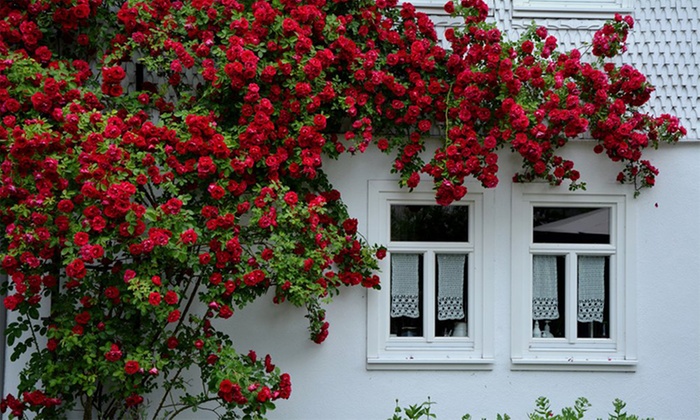FWP:
This is the second of three verses in this ghazal-- the others are {80,4} and {80,9}-- that repeat gul in the second line. For discussion, see {80 ,4}.
This verse also offers a lovely bit of word-and-meaning play involving the word qafā . A rose-bush is full of roses that bloom one after the other, so that as each of them blooms it 'runs after' its predecessor as though it thinks it is pursuing the beloved herself. Thus a sequence is formed in time, with each rose blooming 'in pursuit of' the next. This is the obvious meaning that the commentators prefer. And sometimes roses grow on long vines, so that the sequence may be spatial as well.
But the word qafā also has the meaning of the back of the head, or the nape of the neck-- where beautiful women place flowers when they twine them into their hair. Roses on a rose-bush bloom in very close proximity, and sway toward each other when the breeze blows, so it's easy to imagine that each one is trying to reach the next one's neck, thinking it to be the beloved's neck, longing to be woven into the beloved's hair.
We thus have another example of 'elegance in assigning a cause'. We might have thought that roses bloomed at random, but now we know that 'to this day' they bloom in pursuit of each other, reaching for each other, under the illusion that they are thus approaching the beloved.
And how much of an illusion is it, really? If we go with Bekhud Mohani and read the verse mystically, then of course it's an illusion, since Muslims know that God is not to be found directly manifest in physical form in this world. But if we go with the other commentators, then we know that the rose is to the garden what the human beloved is to the lover, and the two radiant presences can readily be conflated.
The ghazal world offers ample precedents for both identification
and differentiation, and each verse chooses its own way of presenting the possibilities.
Does the rose naively pursue another rose, or
does it pursue the Rose-- no more naively than any of us pursue any (ultimately
deceptive, because unattainable) vision of the Rose? A canny poet like Ghalib
leaves the door ajar, so that both possibilities can meet and mingle as they
do here.


Nazm:
That is, seeing one flower in bloom, then when the next flower emerges, it has the illusion that you have manifested yourself. (81-82)
== Nazm page 81; Nazm page 82